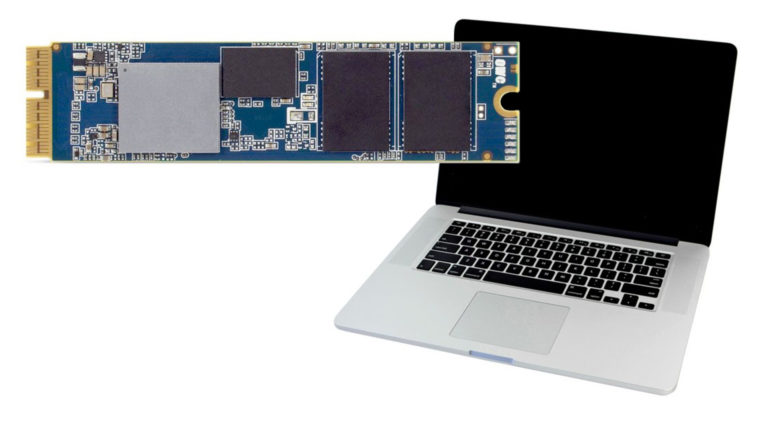Samsung Knows We Need Higher-Performance SSDs with Greater Endurance
Unlike the general computing audience, who may write an occasional email or create a birthday card in Photoshop, multi-tasking DPs, DITs, and content creators work with enormous data loads, reading and writing files sequentially. Consumer SSDs do well enough writing files in a random fashion to an SSD, but they can perform poorly when subject to the more stringent demands of 4K video, digital cinema, and other high-power applications that place maximum pressure on the drive and its controller.
Samsung has long recognized that content creators in film and television place an onerous burden on media drives. This spring, the company introduced a higher performance, more durable SSD, the 860 Pro, to facilitate high-data-load 4K video applications. Compared to previous generation drives that utilized a 48-layer V-NAND chip, the 860 series Pro and Evo drives employ Samsung’s latest-generation 64-layer V-NAND memory, allowing transfer rates up to 560 MB/s in the Pro version, at various capacities up to 4 TB.
Of particular note to filmmakers, the 860 Pro features substantially greater flash memory endurance. Earlier Samsung drives could only manage 450 TB terabytes written (TBW) to a 2 TB capacity drive. (TBW represents the total writes and erasures that can be guaranteed within the SSD’s specified warranty period.)

Today’s DPs, DITs and content creators of 4K programming require a durable SSD and controller that optimizes reading and writing heavy sequential data loads. The Samsung 860 Pro with a 4800 TBW (4 TB version) is said to be up to eight times more durable than previous-generation Samsung drives.
The 860 Pro ups the ante considerably over earlier generation drives, offering 2400 TBW in the 2 TB drive and 4800 TBW in the 4 TB version. The increased endurance is particularly important for rendering high-resolution animation or special effects, with their concomitantly massive files and data loads. It is less important for more run-of-the-mill applications in a non-professional home environment, for which the lower cost and somewhat less durable 860 Evo would be more appropriate.
Still, writing 4 PB of data to any SSD over the course of its five-year warranty period is a lot of use. Beyond that, most SSDs will almost certainly continue to function well and reliably for many years.

The lower-cost 860 Evo, available in 2.5-inch. mSATA and M.2 form factors, features the same 64-layer V-NAND architecture and controller but is intended for lighter duty use, such as reading and writing more randomized data, like email, text documents and spreadsheets.
Curiously, Samsung has reduced the warranty period in the new 860 series from 10 years previously to five years now. The 10-year warranty, Samsung argues, was really overkill, when one considers the typical real-world usage patterns in the client space. Most users, they note, upgrade their computer systems every three to five years, so the 10-year warranty in previous SSD iterations was really more about bragging rights than any practical consideration.
The 860 series drives feature Samsung’s more efficient MJX controller. Over many years and learning the hard way, filmmakers and DPs have come to recognize the weak link in many HDDs and SSDs. The cheap, one-size-fits-all, third=party controller boards that many drive vendors employ are prone to failure. We’ve all experienced the following nightmare scenario late at night in a hotel room far away: A chock-full media drive that fails to mount. The drive may be technically fine, but a defective controller board will prevent the HDD or SSD from accessing crucial data and functioning normally.

The Samsung 860 series SSDs feature the revamped MJX controller. The 64-layer V-NAND architecture contains many more levels and requires a more efficient controller to manage trim, GC (Garbage Collection) and other OS-initiated tasks. As loads and SSD capacities increase, data must be stored and distributed evenly across the many levels of the V-NAND chip to prevent overstressing individual cells, which can lead to premature drive failure.
To achieve optimal performance and reliability, Samsung’s in-house, tightly integrated controller development team offers a major advantage, as flash memory engineers and the controller group can collaborate more effectively to create a protocol linked directly to the chip’s architecture. With the 860 series featuring 64 layers of V-NAND memory and thus an increased number of layers in which to store data, a redesigned, more efficient controller spreads the data around more evenly and minimizes stress on the individual memory cells.
Sadly for Mac users, Apple’s proprietary drive connector precludes use of the 860 series Pro and Evo drives in Mac computers; the 860 2.5-inch drives are suitable only for PCs with a SATA III interface.










